RAF Saltby
They are preparing their kit and parachutes prior to boarding USAAF C-47s of the 314th Troop Carrier Group for the flight to Arnhem. (Via Bob Hilton, still from a film by Sgt CM Lewis, British Army Film and Photographic Unit)
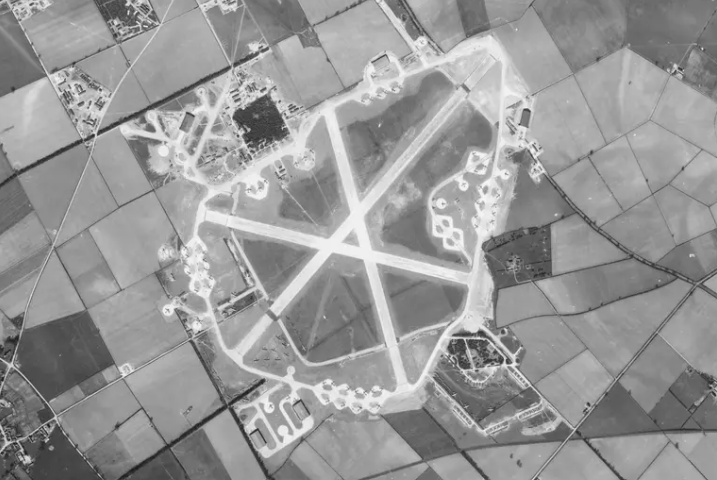
Saltby airfield, photographed by a reconnaissance aircraft of the US 7th Photographic Group on 18 April 1944. (US Air Force)
RAF Saltby (US Army Air Force Station 488) is an iconic airfield in South Kesteven's Airborne heritage. On D-Day, 6 June 1944 , US paratroopers of the US 82nd Airborne Division, including Brigadier General James Gavin, flew to Normandy from here. In September 1944, US aircraft flew British paratroopers from Saltby to Arnhem on Operation MARKET GARDEN, including Lieutenant Colonel John Frost, who commanded the British troops at the Arnhem road bridge, and Polish paratroopers with their commander, Major General Stanislaw Sosabowski.
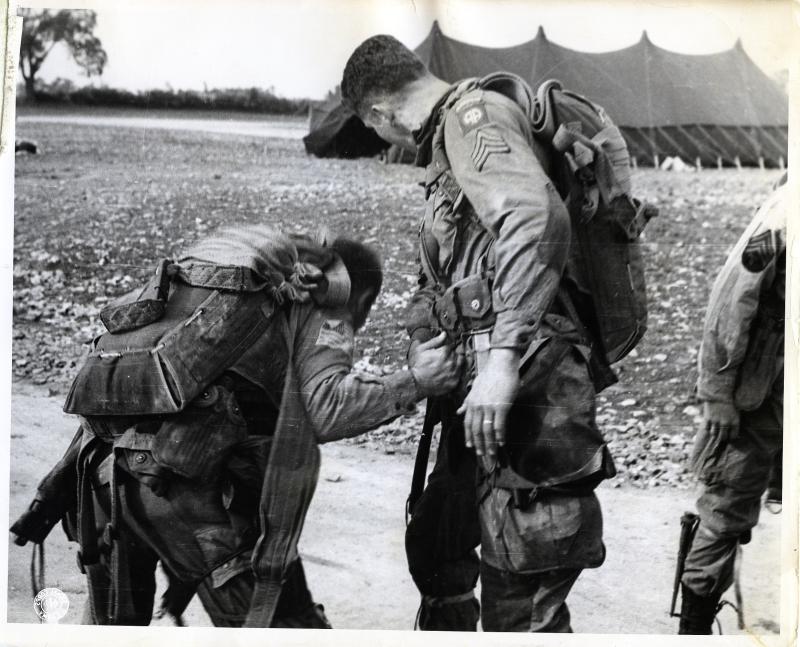
Paratroopers of the US 82nd Airborne Division help each other prepare their parachutes and equipment for D-Day at Saltby airfield, June 1944. (US Army)
Wartime History
Saltby airfield lies partly in Leicestershire and partly in Lincolnshire. It was built as a Class A bomber airfield and was first used by Wellingtons of the RAFs No 14 Operational Training Unit. The airfield was re-allocated to the 9th US Air Force in late 1943 and the 314th Troop Carrier Group started to arrive from Sicily in January 1944. The Group soon began training with men of the US 82nd Airborne Division in parachute drops and glider launches. On 6 June 1944, the 314th dropped paratroops of the 82nd Airborne into Normandy, including Brigadier General James Gavin, the Assistant Divisional Commander.
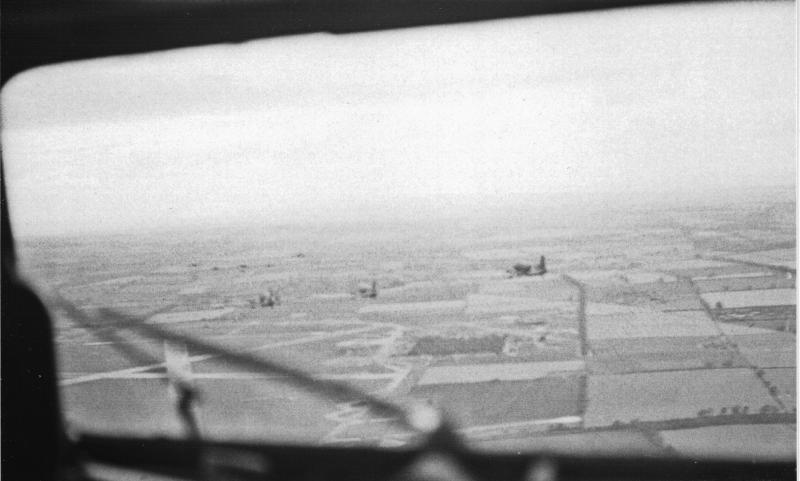
A view from the cockpit as C-47 aircraft of the 50th Troop Carrier Squadron, 314th Troop Carrier Group, fly over Saltby airfield. (via Richard Chancellor)
The distance from Saltby to Normandy was too far for gliders to be towed there during the operation. Instead, gliders stored at Saltby were flown to airfields in southern England in advance of the D-Day, from where they would be flown to Normandy. The 314th TCG was awarded a second Distinguished Unit Citation for its operations over Normandy, having received its first for operations over Sicily. On 17 September 1944, the 314th despatched 69 C-47s with troops of the British 1st Airborne Division to Arnhem as part of Operation MARKET GARDEN.
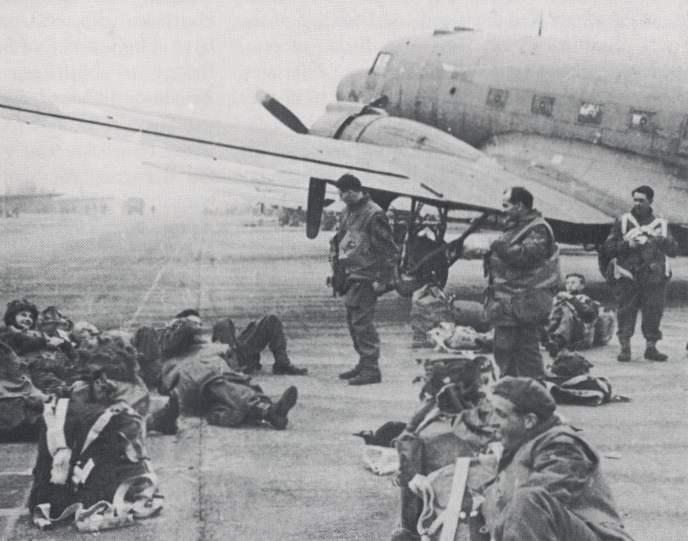
Frustrated by poor weather, Polish paratroopers wait beside their C-47 at Saltby, probably on 19 September 1944. (Pegasus Archive)
They dropped over 1100 paratroops and 240 parapacks and suffered no aircraft losses. On the next day, 72 aircraft left Saltby with more British troops but this time four aircraft failed to return. Delayed for days by bad weather, men of the 1st Polish Independent Parachute Brigade were finally dropped at Driel on 21 September, including the Brigade Commander, Major General Stanislaw Sosabowski.
On 26 September, 29 aircraft of the 314th flew troops and supplies to an improvised landing strip near Grave. During the winter of 1944-45, the 314th spent its time training and flying supplies to the Continent.
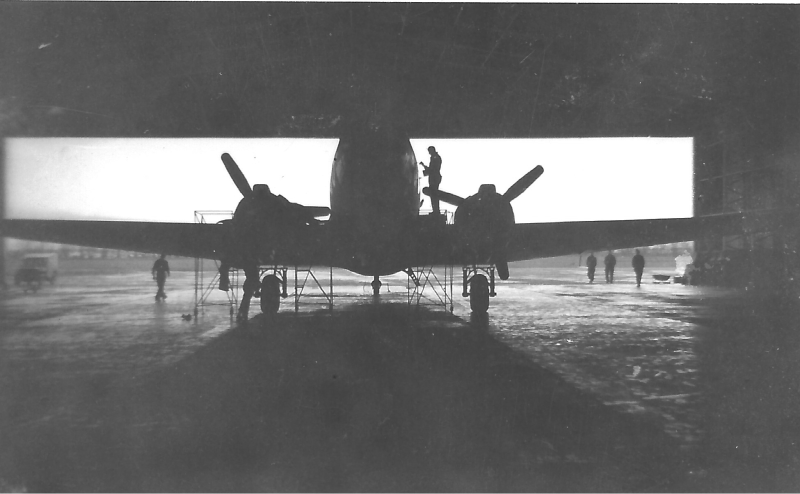
A C-47 undergoes maintenance in one of the T2 hangars at Saltby airfield. (via Richard Chancellor)
In December 1944, it ferried troop reinforcements from airfields in southern England to France during the German Ardennes offensive. In March 1945, the Group moved to France and the RAFs 1665 Heavy Conversion Unit moved into Saltby with Short Stirlings. In May 1945, a detachment of C-46 aircraft of the 349th TCG deployed to Saltby from its base in France to airlift troops of the British 1st Airborne Division to Norway as part of Operation DOOMSDAY to oversee the surrender of German troops. The 349th detachment left at the end of May. The RAF disposed of Saltby airfield in 1955, and the site returned to agriculture.
Today an aviation presence remains at Saltby in the form of the Buckminster Gliding Club, whose Clubhouse is on the site of the hangar at the north-east corner of the airfield. Nearby is a stone memorial to those who served at Saltby during World War II (see Airborne Memorials in South Kesteven).
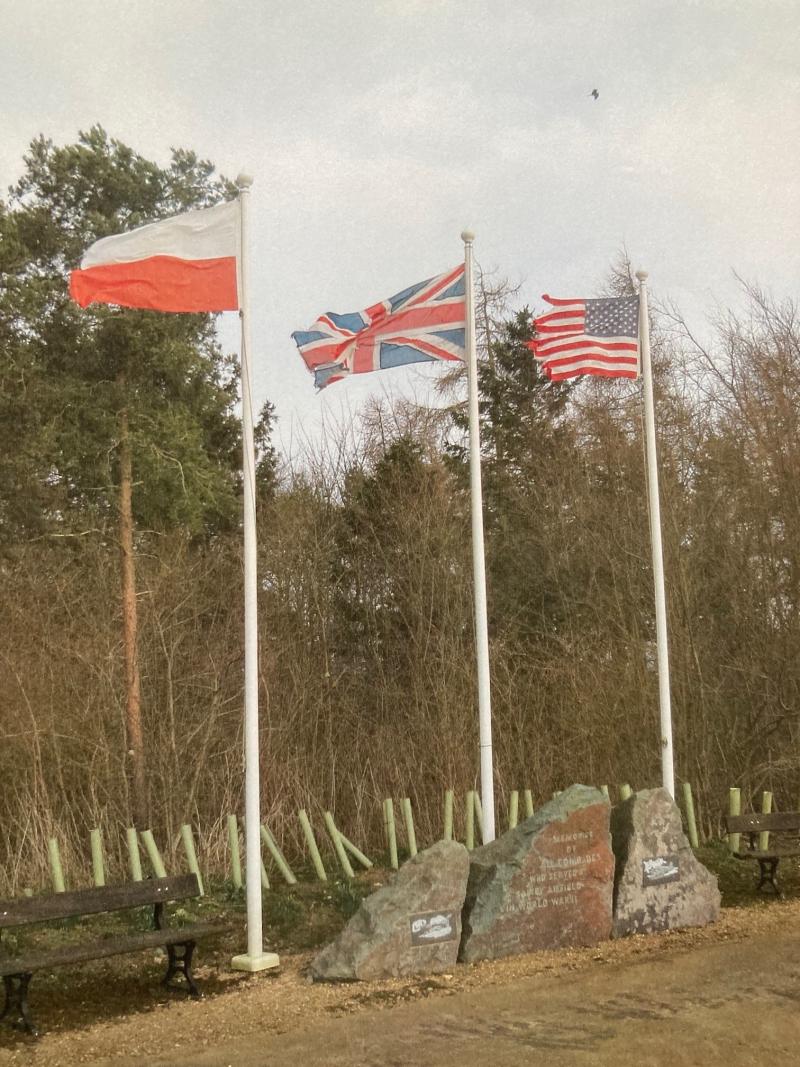
Allied flags fly at RAF Saltby
On the Doorstep
Experience a glider take-off from RAF Saltby with flights bookable in advance through the Buckminster Gliding Club. The Clubhouse has World War II memorabilia and close by is a memorial to the airfield's tri-national Airborne heritage.
For those who would like the thrill of a parachute jump, try a tandem skydive at Langar airfield, which was used by RAF Bomber Command and US IX Troop Carrier Command during the war.
If you like food, you might want to visit the 'Rural Capital of Food', Melton Mowbray, which is around 12 miles from Saltby airfield by car. It has specialist food shops in its ancient town centre, you can join organized food tours.
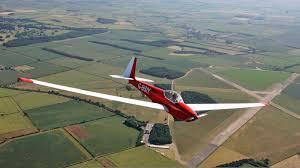
Public Access
The airfield is accessed from the country road between Sproxton and Skillington, with a sign on the roadside. The access track to the airfield is quite damaged and has a strict speed limit, and should be negotiated with care.
The airfield's original runways are now used by the Buckminster Gliding Club. It is not open every day, so please check the Club's website for the latest information: